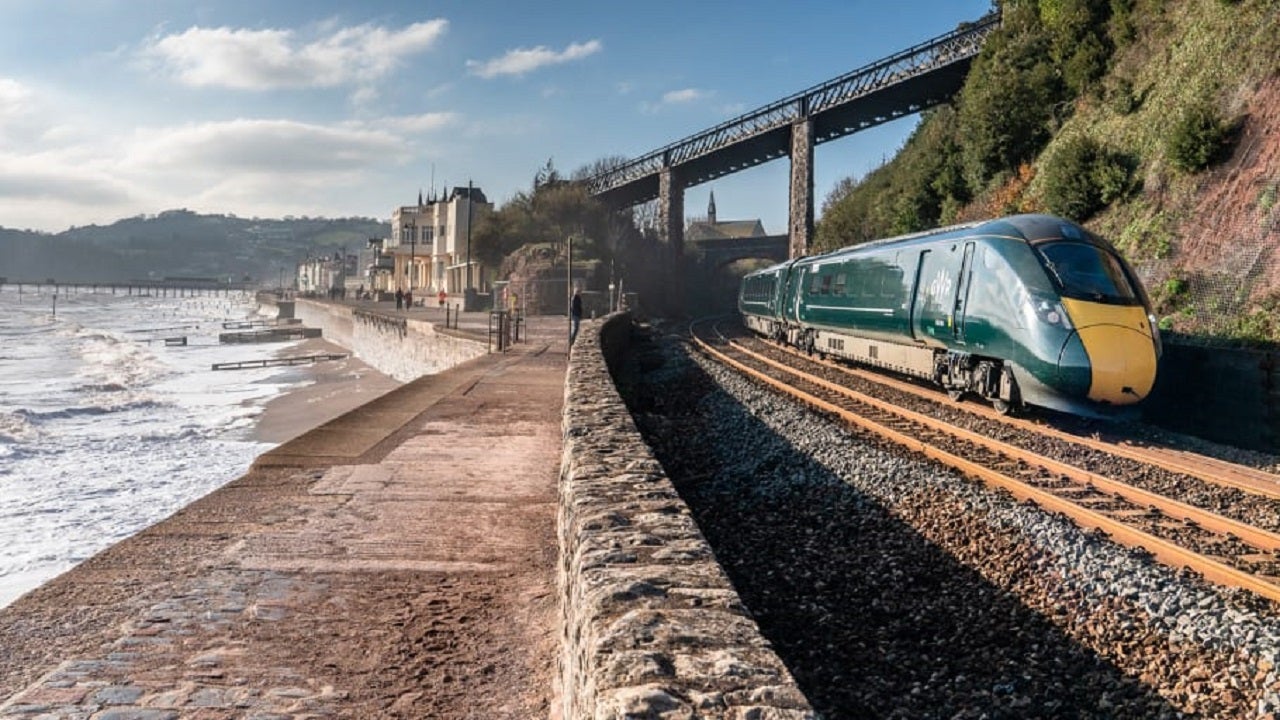Given that the main flow of passenger traffic would likely be from Southampton, Portsmouth, and points along the SWML rather than from London chances are all you'd need is extra capacity (longer trains) on the existing services running out of Waterloo, but only for points West of Basingstoke. As I suspect that early days there's little need for an additional service or of London.
Longer term, when you could justify a second Plymouth service, then you're probably looking at possibly post Crossrail 2 which does create additional paths out of London. Which as you pointed out wouldn't really work from Paddington.
With a second service you could find (although extra work would be needed to create capacity for extra services on the WofE line) that it could be viable to look at trying to attract London passengers by cutting stops. By doing so it could be that you could reach Exeter sooner than the next Paddington service but leaving London later than the previous.
In the interim, but after electrification, you could look at moving some of the more minor stations to be served by extending the Basingstoke stoppers to (ideally Yeovil) but giving them a 2tph frequency. Yes those West of Salisbury would change there to get to London, likewise those West of Basingstoke.
However at ~800 passengers a day (about 400 each way), or less, at most of the stations other than the key ones, it's hardly going to inconvenience many people, however most of that inconvenience would be offset by a doubling of services for most places.
Even if you couldn't get to be "quicker" than waiting for the next service, depending on what rail passenger numbers do post Covid-19 (and long distance may increase due to people WFH more and therefore no longer needing a car for getting to work), we may find that there's as need for increasing capacity heading westwards. Whilst there's some capacity uplift possible from the Paddington semi fasts, that might not gain all that much extra space. Especially if the increased frequency may encourage more use (even though the overlap between the two is limited a lot of the often skipped stations have a much more reliable level of service).
Even if there's a fall, chances are it's only going to roll passenger numbers back by a few years and mostly during the peaks with reduced commuting.
Whilst there's likely to be risks with linking up services to for a Waterloo Plymouth service, some of that can be protected against. Firstly there could be more loops/additional redoubling, which could add a few minutes of buffer to where the services need to pass. Next up there could be small increases in padding to ensure the paths are met (for instance you could lose one stop and use the time saved).
Whilst you do gain access to the rail network by having two branches, that's not always where people want to go. For instance the Tavistock line would work if you want to get to Plymouth, heading to Exeter or London, less so (still possible, but would take a lot longer).
The fact that it didn't have a good case when only looking at local services, doesn't mean that that would also be the case when you look at a through service. Not least because the ticket prices paid are much higher, you could sell one £21 ticket rather than 14 £3.50 tickets to generate the same income, but at a lower cost. Especially given that there's the potential for the extra passengers on the existing part of the services would likely be traveling in capacity needed for the London end of the services.
At £21 (and look at how far £17 gets you from Exeter, assuming £4 for the leg from Plymouth, when heading off peak along the WofE line) you'd need about 33 passengers/hour (16 in each direction) over a 15 hour day (7am to 10pm) to generate £3 million of income (assuming that lease costs are £120,000/coach/year and you're going to run 6 coach trains and you have double that for other costs which gets you to £3 million).
Whilst that's possibly a fairly big ask, of the average ticket was £24 that falls to 28 passengers, whilst at £31 it's down at 22 passengers. Those are all prices which are fairly easy to pay for tickets going quite some distance if you miss out on the very discounted prices which there often are.
Even at £2.50 supplement for going to Plymouth on top of the existing discounted tickets (£12.50+£2.50=£15) you would only need 45 passengers (without anyone paying for first class, which given the price some would be willing to pay the extra).
At that price, even with three in a car, going from Basingstoke or Woking is going to be comparable to paying just the petrol costs and so could attract a lot of people.
Whilst the journey time would be fairly slow, you don't get stuck in traffic (which is often the case) and you don't need to stop to go to the loo (which most people should do), meaning that it's probably not that bad.


